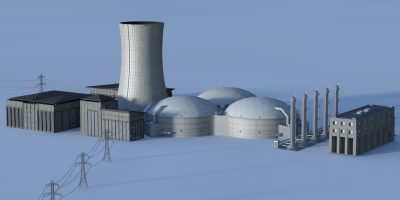Iron Sky – Day 91
 It’s become increasingly clear to me that the production doesn’t not have enough render power on hand currently to deal with the amount of shots we have remaining to complete. I have a plan to deal with this, and I’m not freaked out or anything, but the reasons are a bit upsetting.
They (the shots) have become more complex almost daily and their number and to a certain extent a lack of “commit or die” factor and for some strange reason is still not fixed and locked. This is due to two things.
1. In the real world (well, where is that really?) the director of a film or a TV show gets an opportunity to do a “courtesy” edit pass. After that they basically pick up their cheque and move on to the next project. From there, the producers and the main editor of the show do everything onwards with the other heads of departments that are affected by decisions in the edit. Costs being top factor from that point in. Here in Europe, directors believe they can make radical changes to edits all the way past it being out on the screen it seems (this was one of the major issues with CARGO). This kind of approach to film making is… not.. It’s hard to describe. Basically what it does is it holds up the show for the rest of the post production process. This is why Cargo too a freaking year longer than it was supposed to and why people, some of which who are friends are still owed money by that goof ball production company in switzerland.
Anyway. The second reason now…
2. Lack of on hands editorial for VFX specifically creates doubt in the VFX process. Which shot is more important? How do we budget time for models appropriately if we don’t have a cut of the VFX and it’s not locked, so that we can concentrate on the areas that are seen, shot for shot? There are more “ifs” that pop up that are major trip ups. It also gives way too much time to over think the process and details that become week long projects for someone who is ready to slice their wrists- become week long projects of your brains bleeding out building in details to something or TDing a rig that may end up on the cutting room floor- meanwhile there are things being neglected that you HAVE to deal with and there are hold ups there in other parts of the process. Examples being something simple like – oh never having X concept thought out, or just not enough man power on deck to deal with just yet, or another freaking BS excuse or total FAIL from another application used in the pipeline – the reasons can be as endless as endless changes that many of us know all to well about when doing this kind of work.
I may be painting a bleak picture here beyond reality – but at this time, render power and a locked cut are two things I desire greatly right now.
It’s become increasingly clear to me that the production doesn’t not have enough render power on hand currently to deal with the amount of shots we have remaining to complete. I have a plan to deal with this, and I’m not freaked out or anything, but the reasons are a bit upsetting.
They (the shots) have become more complex almost daily and their number and to a certain extent a lack of “commit or die” factor and for some strange reason is still not fixed and locked. This is due to two things.
1. In the real world (well, where is that really?) the director of a film or a TV show gets an opportunity to do a “courtesy” edit pass. After that they basically pick up their cheque and move on to the next project. From there, the producers and the main editor of the show do everything onwards with the other heads of departments that are affected by decisions in the edit. Costs being top factor from that point in. Here in Europe, directors believe they can make radical changes to edits all the way past it being out on the screen it seems (this was one of the major issues with CARGO). This kind of approach to film making is… not.. It’s hard to describe. Basically what it does is it holds up the show for the rest of the post production process. This is why Cargo too a freaking year longer than it was supposed to and why people, some of which who are friends are still owed money by that goof ball production company in switzerland.
Anyway. The second reason now…
2. Lack of on hands editorial for VFX specifically creates doubt in the VFX process. Which shot is more important? How do we budget time for models appropriately if we don’t have a cut of the VFX and it’s not locked, so that we can concentrate on the areas that are seen, shot for shot? There are more “ifs” that pop up that are major trip ups. It also gives way too much time to over think the process and details that become week long projects for someone who is ready to slice their wrists- become week long projects of your brains bleeding out building in details to something or TDing a rig that may end up on the cutting room floor- meanwhile there are things being neglected that you HAVE to deal with and there are hold ups there in other parts of the process. Examples being something simple like – oh never having X concept thought out, or just not enough man power on deck to deal with just yet, or another freaking BS excuse or total FAIL from another application used in the pipeline – the reasons can be as endless as endless changes that many of us know all to well about when doing this kind of work.
I may be painting a bleak picture here beyond reality – but at this time, render power and a locked cut are two things I desire greatly right now. « Iron Sky – Day 88 (Previous News)
(Next News) New Products Update And Back to School Savings »
















I once told a client that “animation is not jazz: you cannot improvise. Something that takes you two seconds to say can take me a week to animate and render.”
Was the previz lacking here? In less, –and I’m not making a crack here, but, –professional settings getting the director to sign off on something can be a nightmare. (To clarify: the discipline required to get a show out the door every damn week on time is very foreign from creating ONE product every three or six years.)
I tried to get the director to at least consider sign off sheets and approvals done on paper like one would do in the real world but there was some kind of comment that came back regarding this that would have made james cameron look like a sweet heart in comparison. Something about lowly CGI artists daring to get any kind of commitment of any kind on X out of “me”. Needless to say what I thought of that later on. That same thing didnt ride too well with anyone else frankly and that was quickly nipped in the bud.
Frankly, (as I’m sure you know) that’s ridiculous. A SMART director knows that sign-offs on pre-viz makes things FASTER, since it avoids many a false-step or blind alley.
Pre-viz is the storyboards of VFX, and it’s nuts to resist their use. One of the reasons Spielberg is such an efficient director is his use of storyboards, and I’m sure, pre-viz.
There isn’t a trust-fund involved somewhere here is there? I’ve seen such behaviour before when a trust-fund is in the woodpile.
This post makes me understand quite well why Rob talks so much about the virtual art department. I’m not sure how this film was done regarding the use of animatics and previs, but such things, if done right, will serve a director to make a pretty solid judgement of framing, pacing, content etc and also make sure to see a final edited movie with these pieces in there. “Yes… this is it!” or… “Ok.. we need to rework those shots..”, but since they are in animatic/previs state, changes can be made quite fast. Not until the director is happy with what he sees in actual context (that means… edited together), production begins. This is pretty much how we work, and internaly with the director, it works quite well. There are outside factors for us, that can put a stick in the wheel, so to speak; usually if the game that we do the cinematic for, gets a change of story or characters. If that happens though, we usually get a lot more time to compensate for those late changes of heart.